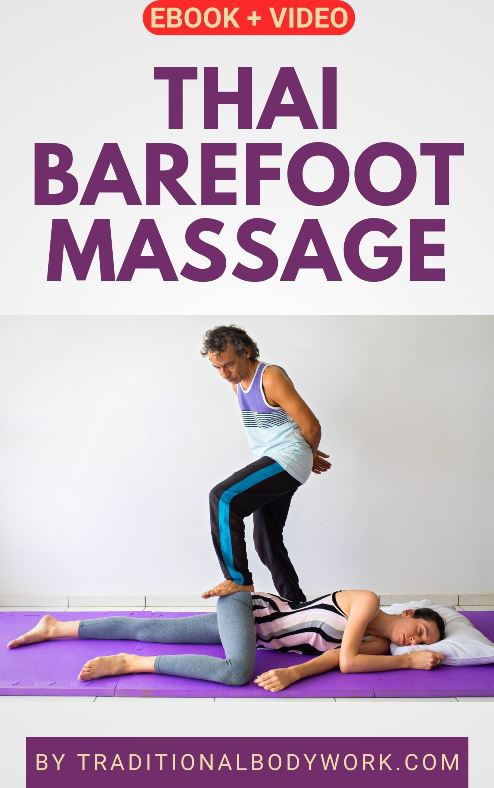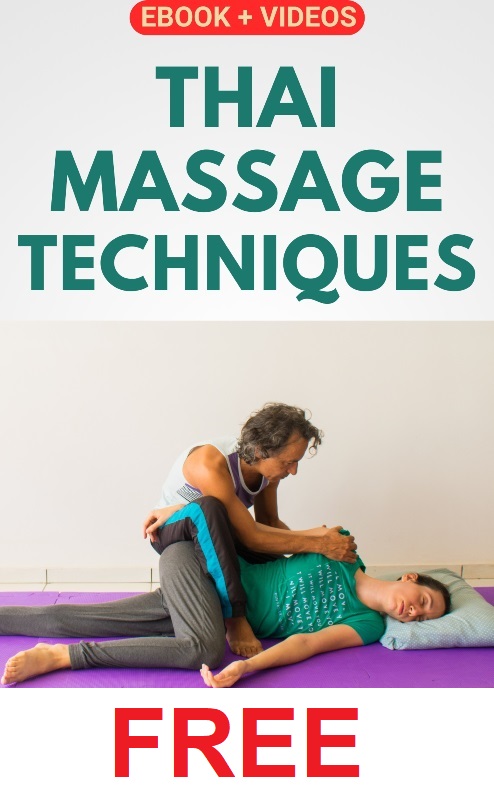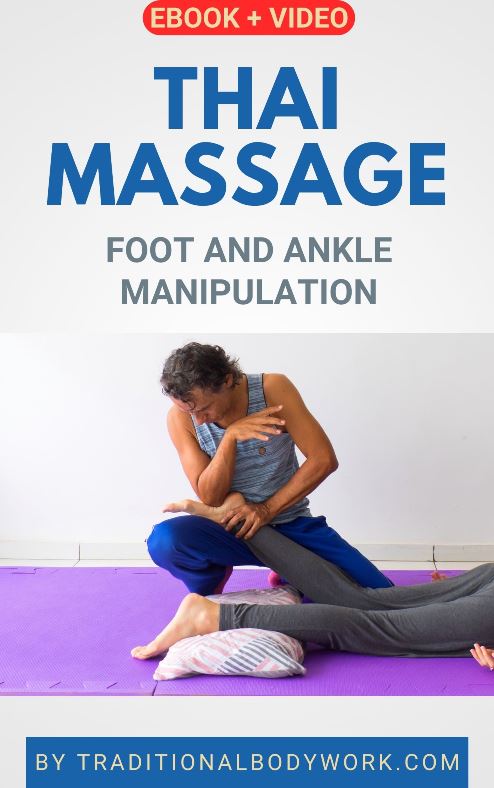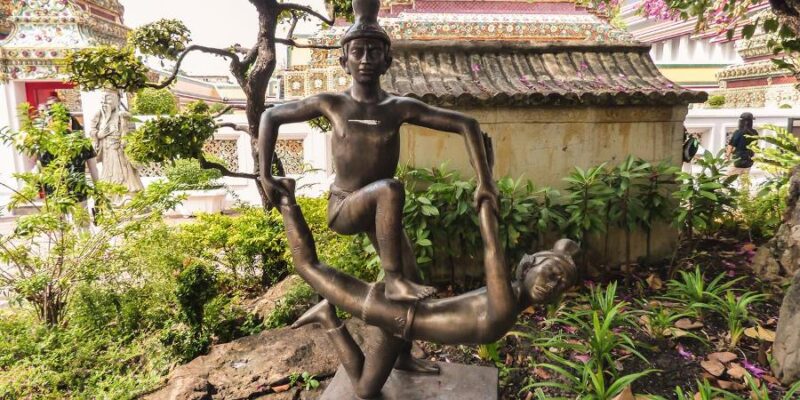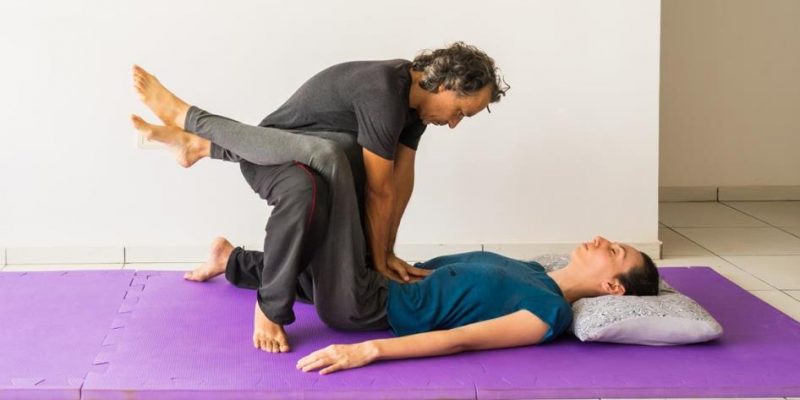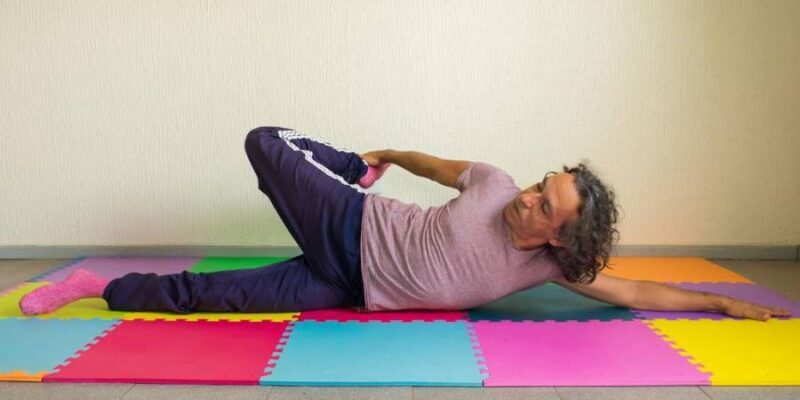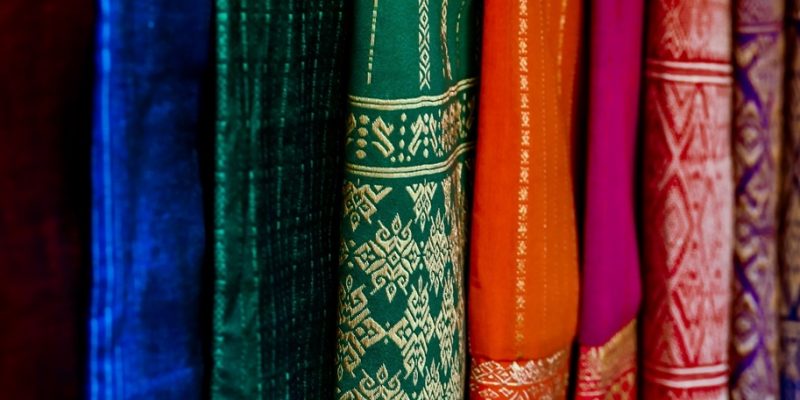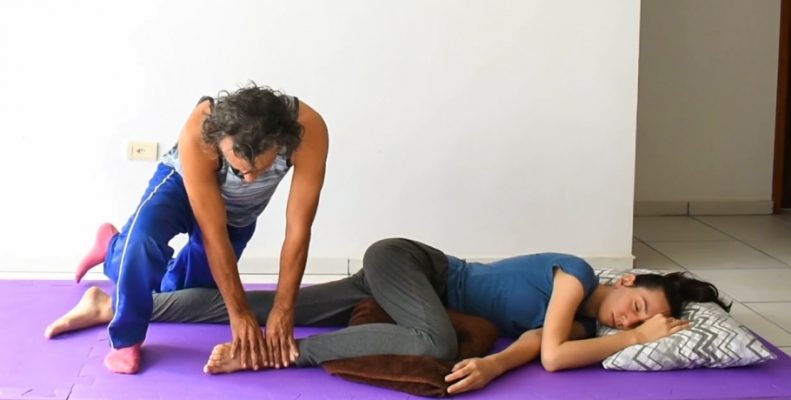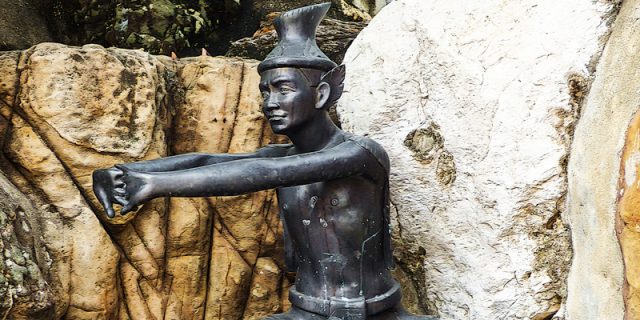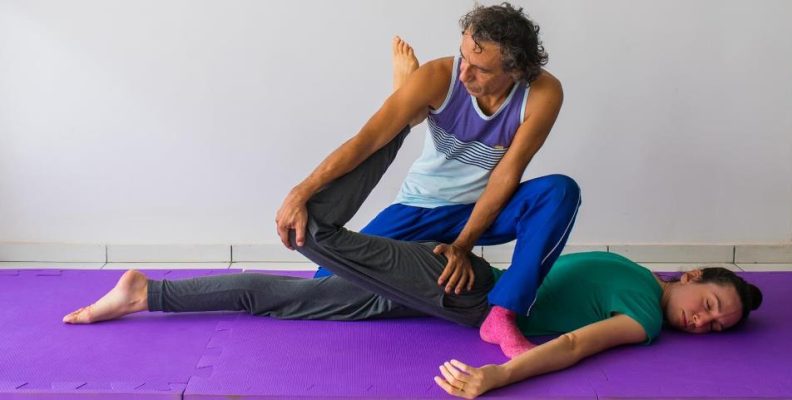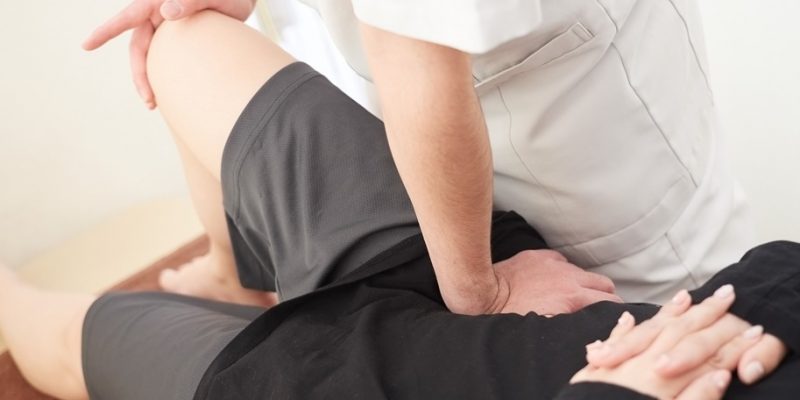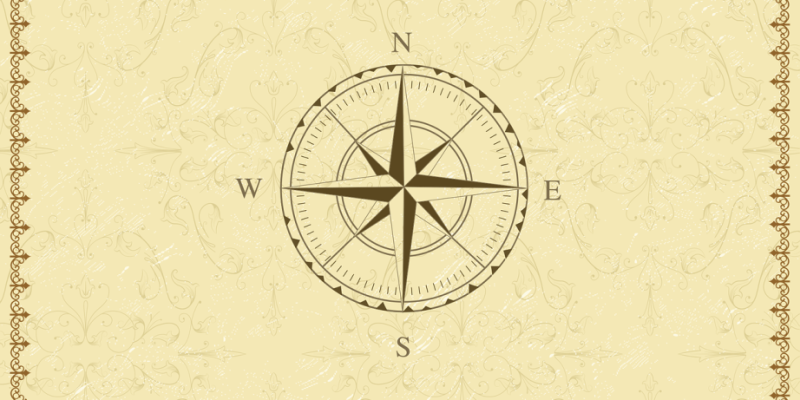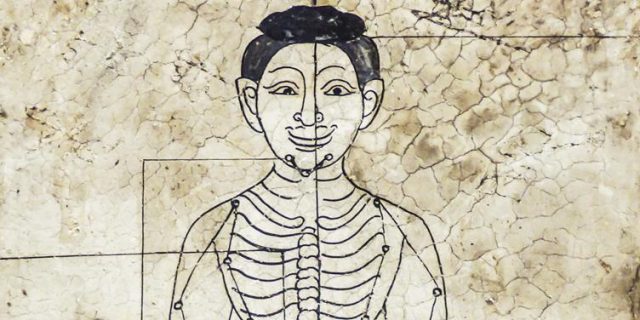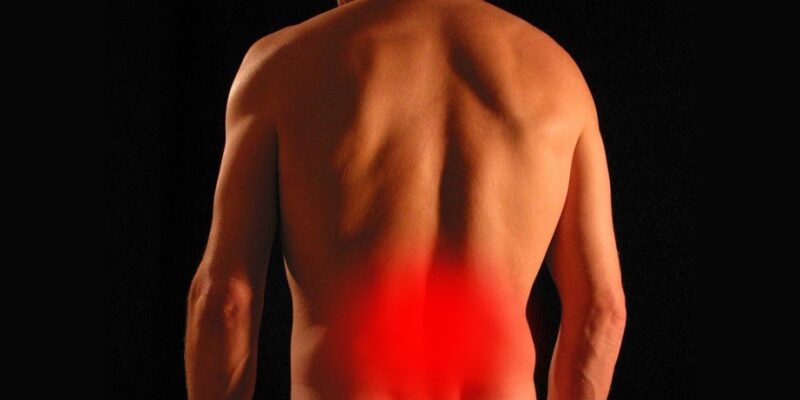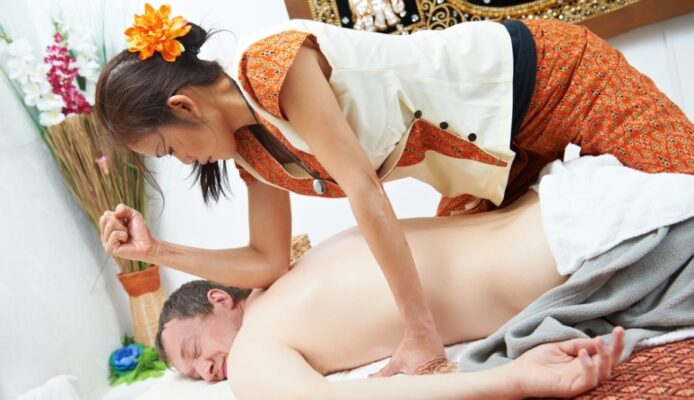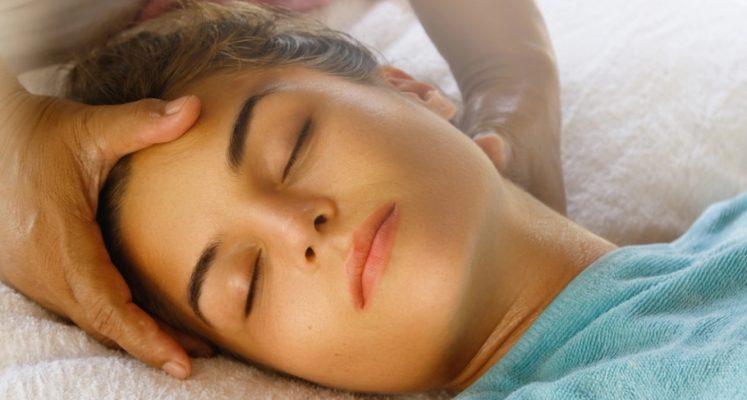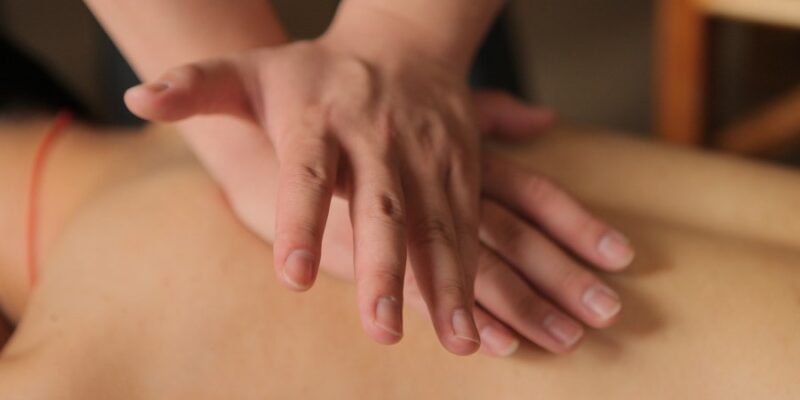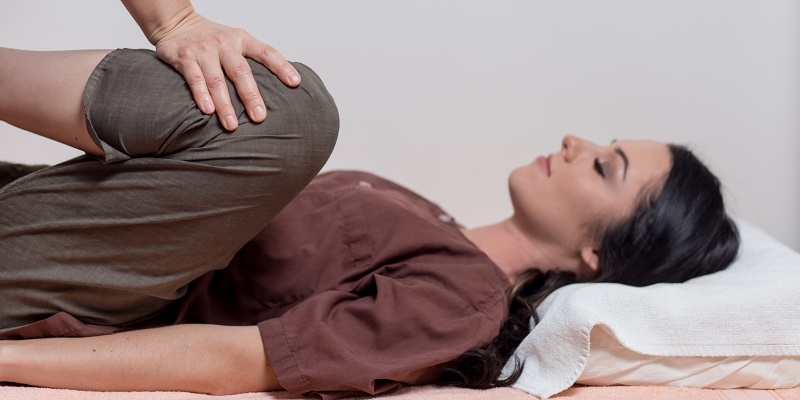
Wide-surfaced stretching on the floor mat is one of the key features of traditional Thai Massage, making this type of healing bodywork a jewel for the eye, and moreover, a very effective movement therapy.
Thai Massage Stretches
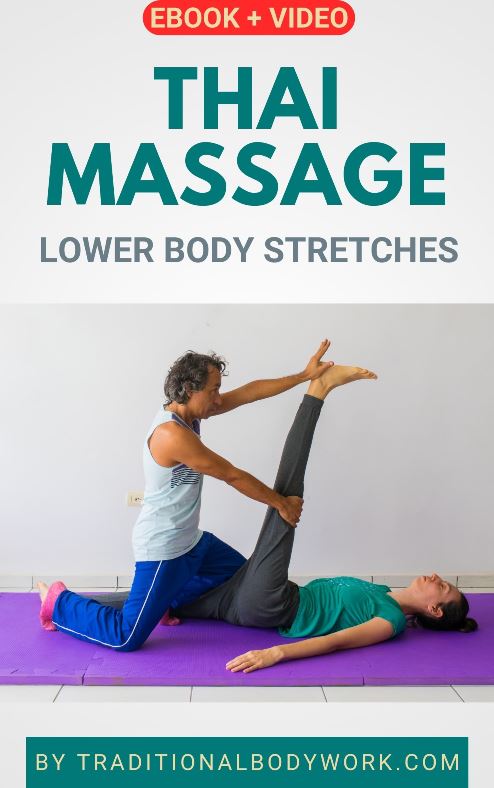
A considerable part of Thai Massage stretches is based on Yoga Asanas. Well, at least when it comes to Northern Thai Style Massage, but this goes to a lesser degree also for Southern Thai Style Massage, which is generally more acupressure and protocol based.
Mind that Thai Massage stretches performed on the receiver are also called assisted stretches, and sometimes even assisted Yoga if one is more into so-called Thai Yoga Massage.
Of course, depending on the pose or assist, a particular part of our body is stretched. Within Thai Massage, we often use assists that stretch the hamstrings, the quadriceps, the calves, the psoas muscles, the back muscles, the abdominal muscles, pectorals, neck and shoulder muscles, let’s say, the major muscle groups.
Nevertheless, hand-palm pressure (palming) and acupressure, which are likewise much used in Thai Massage, are in fact also a type of stretch, but then on micro-level, cell tissue-level, may that be micro-pressure on muscle, blood vessel, lymph or nerve cells, or on the Thai Sen Energy Lines.
Assisted Stretching | Aims and Health Benefits
Stretches can loosen up shortened and tight muscles, tendons, vessels and nerves, open-up and mobilize joints, and with that stimulate and improve our body’s range-of-motion capabilities, and our immune and circulatory system.
Our circulatory system (also called cardiovascular system) is one of the most important components of our body, roughly consisting of lungs, blood, blood vessels, and the heart. Depending on the definition, the circulatory system also includes the lymphatic system, which circulates lymph and is connected to the bloodstream.

In any case, this interconnected circulatory network supplies the tissues in our bodies with oxygen, antibodies, and other vital nutrients and agents, transports hormones, and removes waste products (detoxification). In fact, without a proper functioning circulatory system we get seriously ill, or at a minimum suffer from various health disorders, discomforts, or dis-eases.
Research done on stretches has shown that regular and structural stretching keeps muscles strong, long, lean, elastic and flexible, and this, apart from the benefits mentioned above already, achieves muscle tone, prevents muscle and joint injuries and joint pains, prevents squeezing of nerves and associated pains, and improves standing, moving, and postural balance.
Types of Stretches
Typically, we recognize four types of stretches: static, static PNF, dynamic, and dynamic ballistic stretches.
Static stretching, which is the type of stretching mostly used in Thai Massage, slowly brings a joint and muscle group to its maximum range of motion and holds it there.
Static PNF stretching is a modern, more advanced form of static stretching. PNF is an abbreviation for Proprioceptive Neuromuscular Facilitation and this type of stretch applies active muscle contractions (done by the receiver) and external force (done by the therapist) to trick the muscle to go into a further stretch.
Dynamic stretching is a movement based stretch with the goal to increase blood flow throughout the body and at the same time loosen up muscle cells and fibers. It’s often used as a synonym for a warming-up exercise.
Dynamic ballistic stretching then is an active stretching technique that involves bouncing or swinging muscles and joints back and forth at a high speed in order to take a muscle beyond its normal range of motion. Dynamic stretching is less used in Thai Massage, but of course may be used depending on the goal of a session.
A note to add here is that a stretch — and this is notably the case for static stretching — needs to be hold a certain period of time to be effective. In general, it’s advised to hold stretches for at least thirty seconds up to a maximum of sixty seconds, but longer is possible.
It’s important to hold a stretch for a certain period of time to give the body the chance to relax into the position to avoid body-driven resistance and let the brain realize that things are safe to go deeper or further. It’s thought that the body is still in a “protective state” if a stretch is held less than about twenty seconds, making a stretch much less effective. Moreover, forcing muscle fibers to go beyond their habitual range of motion too quickly can cause damage and injuries.
Final Word

In the West, Thai Massage has sometimes reinvented itself as a Sports Massage modality addressing the stretching and rehabilitation needs of professional athletes and other sportspeople. Moreover, we see Thai style stretches being incorporated in Western bodywork modalities like Swedish Massage, Osteopathy, Chiropractic, and Physiotherapy.
In any case, Thai Massage boasts this incredible repertoire of stretching exercises, undoubtedly more than any other type of assisted bodywork. Therefore, in my opinion, Thai Massage assisted stretching is an exceptional tool to get the most out of the benefits of doing stretching exercises.
Nevertheless, it takes proper training and experience with many types of clients to really master the often advanced Thai Massage Yogic stretches. Moreover, a therapist always needs to bear in mind the individual capabilities and limitations of the receiver and take necessary massage and stretching precautions and contraindications into account to avoid injuring his or her client.


